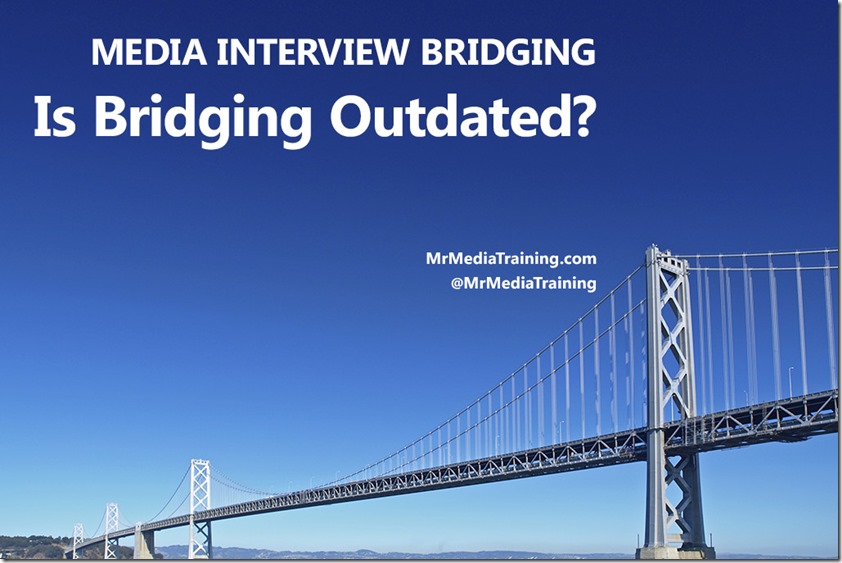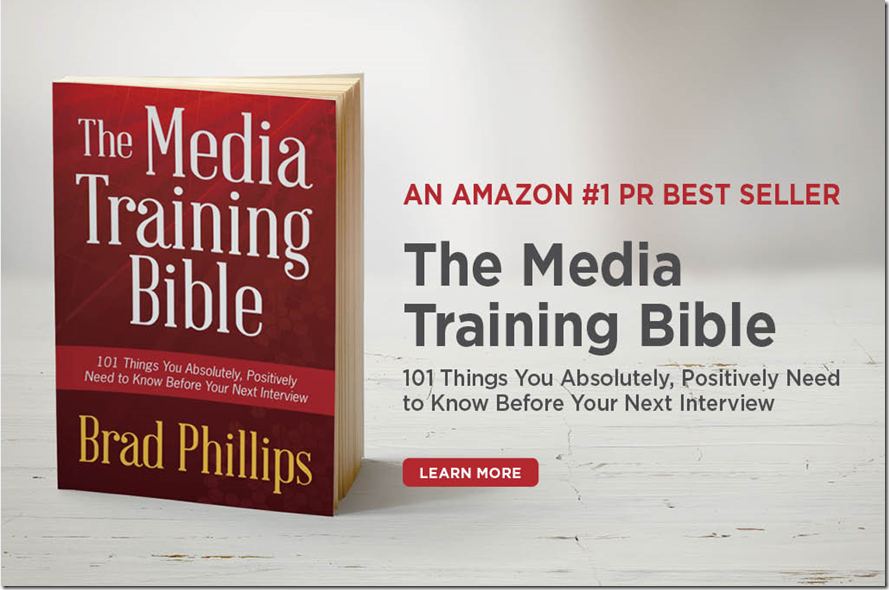Media Interview Bridging: Is Bridging An Outdated Practice?
In this series, I’ve explained the importance of bridging and shown you how execute the technique effectively. But I wanted to acknowledge a debate in the public relations industry about whether or not bridging is an outdated practice that should be abandoned.
My short answer to that question is no. But the critics make a few points worth examining—so in this post, I’ll look at the main objections and assess their validity.
The first criticism is that bridges are a form of evasion. Jeremy Porter, a well-respected PR professional (and one of my favorite bloggers) made that argument by writing, “The next time you find yourself infuriated with a politician avoiding the question pay close attention to the language they are using. They’re probably bridging.”
He’s right that bridges are too often used to evade direct questions and that politicians are among the worst offenders. But as you read in my introduction to bridging, bridges should typically be preceded by a direct answer. When they’re not, the response should still address the heart of the question in an authentic way.
As these three examples showed, when well executed, a bridge does not prevent an interviewee from giving a straightforward response. Rather, it allows them to move onto safer turf once the question has been satisfactorily addressed.
In an article on the Finn Public Relations website, Kristien Vermoesen writes that:
“Bridging [is] for situations where you genuinely won’t or can’t answer the question. Journalists (and the audience) aren’t stupid. They know perfectly well when you’re just rattling off your talking points.”
I agree that you should never “just rattle off” your talking points. Every question must be addressed in a meaningful way. But working with thousands of trainees in the practice room has made it clear to me that being both on-message and credible are not incompatible traits.
Finally, a related argument against bridging is that “journalists are onto it.” My flip response is to ask, “Who cares?” After all, I recognize the interviewing techniques used by good investigative reporters, and they don’t mask them from me just because I might spot them. So why should I care if they, too, understand the techniques used by good spokespersons?
The less flip response is to acknowledge that journalists may be onto bridging, and that fact does bring up an important point: Bridging, when done in a ham-fisted manner, can come across to both the journalist and the audience as false or dishonest.
The problem is not with the technique. It’s with people who use it badly.
Bridging is a learned skill. When used well, it’s a critical part of a spokesperson’s rhetorical toolbox. Some people are so deft at bridging that you’d have a tough time even spotting the technique in action. Others, however, are so heavy-handed with it that it’s like watching a toddler with a hammer—it’s a good tool, but used by the wrong person. So what can you do if you fear you might be in that category?
In an earlier post, I listed several bridging phrases you might consider using. But there’s often a better way to select a bridge line.
In everyday conversation, we all use transitions. Pay attention to the transition lines that you naturally use. Some are better than others (you might say “anyway” as a conversational transition, which wouldn’t translate to media interviewing), but you’ll probably spot some good ones along the way. One of the greatest ways to ensure your authenticity comes across is to say things you would actually say—and paying attention to the words you normally use will help you do exactly that.
You can see several examples of bridging here.




